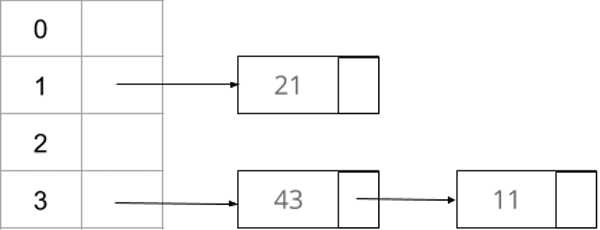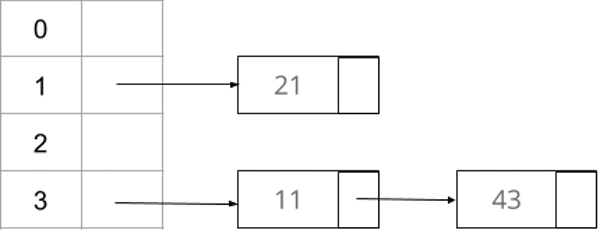Practice: Hashing
Contents
Practice: Hashing#
If we do the insertions in the order of the code snippet below, what is the resulting hash table? Assume the following:
The hash table has 4 slots
If there is a collision, add the new value at front of the chain
We are using the hash function:
h(v) = v % 4
nums = set()
nums.add(11)
nums.add(43)
nums.add(21)
Question 0#
Your Task
Select one option. Write your answer down in your own space.
Option 0

Option 1

Option 2

Option 3

Option 4
None of the above
Question 1#
Now for the hash table you have selected above, what should the return value be for the following call:
11 in nums
Your Task
Write your answer down in your own space.
Question 2#
Now for the hash table you have selected above, what should the return value be for the following call:
5 in nums
Your Task
Write your answer down in your own space.
Question 3#
Consider the class definition for a Dog class below. Which of the following implementations of __hash__ is the best, in the sense that it is functional and does the best job at meeting the properties of a good hash function
class Dog:
def __init__(self, name, age):
self._name = name
self._age = age
def __eq__(self, other):
return self._name == other._name
Your Task
Select one option. Write your answer down in your own space.
Option 0
def __hash__(self):
return hash(self._name)
Option 1
def __hash__(self):
return 0
Option 2
Assume random is a function that generates a random number.
def __hash__(self):
return hash(self._name) + random()
Option 3
def __hash__(self):
return hash(self._name) + hash(self._age)
